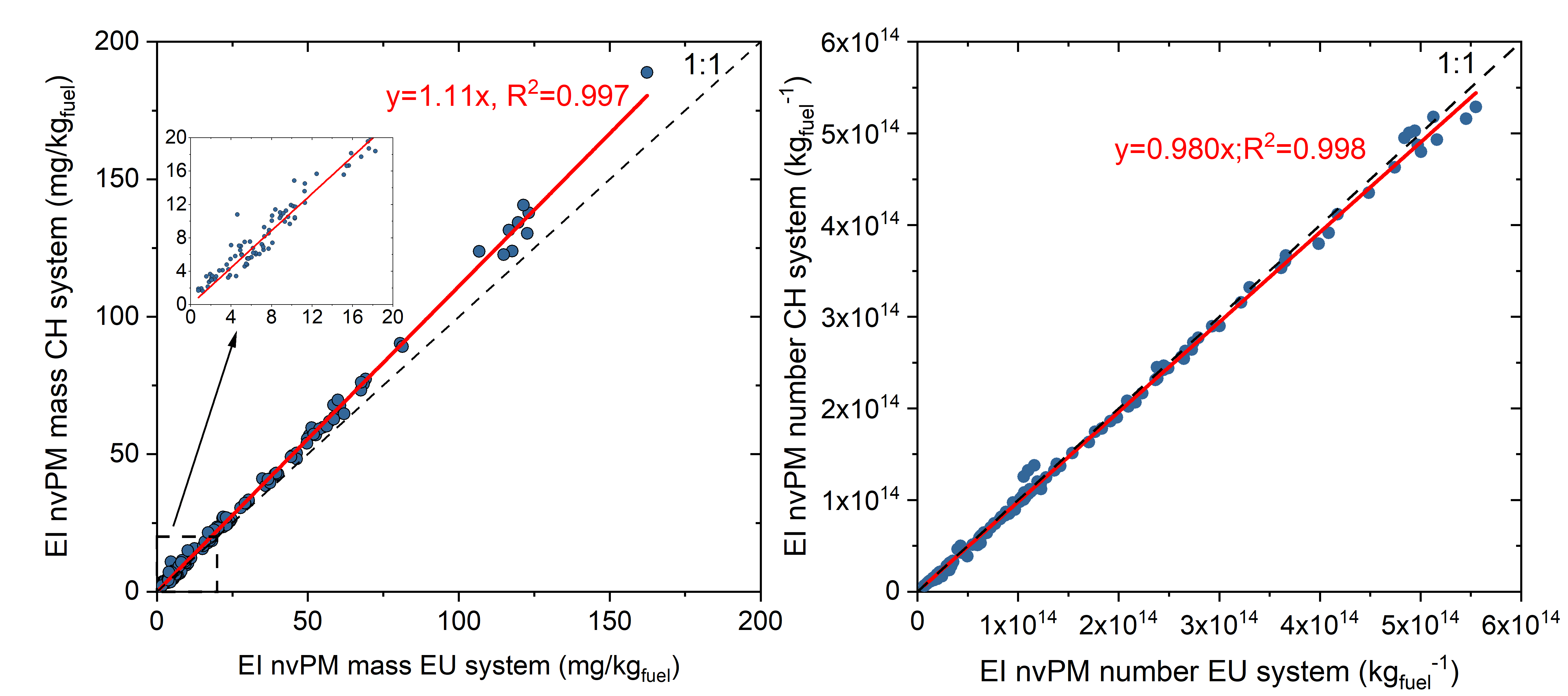Intercomparison of two reference sampling and measurement systems for aircraft engine non-volatile PM using a small-scale RQL combustor rig burning conventional and sustainable aviation fuels
Aircraft gas turbine engines directly emit non-volatile PM (nvPM) with electrical mobility diameters mostly below 100 nm, affecting local air quality and the climate. To mitigate nvPM pollution, the International Civil Aviation Organization (ICAO) has introduced certification standards for nvPM mass and number emissions of aircraft turbine engines with rated thrust above 26.7 kN. However, further work is needed to characterise and reduce nvPM emissions measurement uncertainty and particle loss correction to provide better estimations of engine exit concentrations for airport emission inventories. As a part of the first campaign of the Horizon 2020 funded project RAPTOR, two nvPM reference sampling and measurement systems (Swiss and EU) were operated in parallel and sampled exhaust from a small-scale aero-engine rich-burn quick-quench lean-burn (RQL) combustor rig burning a range of conventional and sustainable aviation fuels at multiple rig operating conditions. Additional particle size measurements were performed using a TSI SMPS with a catalytic stripper in the Swiss system and a Cambustion DMS-500 fast spectrometer in the EU system.

The preliminary results of this study show good agreement between the two systems for the nvPM number and mass emission indices (EIs). At low nvPM mass concentrations, larger discrepancies were observed between the two systems because of the shedding of particles accumulated in the PM1 cyclones installed in each system. At specific rig conditions, the RQL combustor produced bi-modal particle size distributions with no volatile fraction which were similarly captured by both the SMPS and the DMS-500. It was found that the standardised particle loss correction methodology (only requiring measured nvPM mass and number) was inaccurate when particle size distributions were bi-modal and or low nvPM mass concentration when compared with particle loss correction estimated using measured particle size distributions. This study will lead to a better understanding of the uncertainties of the regulatory nvPM data and supply data to improve the measurement methodology and more accurate prediction of aircraft engine nvPM emissions released into the environment.